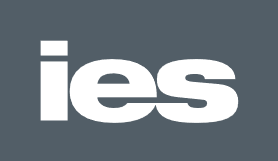The Supply of Machinery (Safety) Regulations are health and safety requirements that relate to machinery used in the workplace and at home.
Applicable to the sale and supply of machinery on the UK market, the legislation aims to protect against machinery causing harm and damage.
Equipment in the scope of the Supply of Machinery (Safety) Regulations must be UKCA marked. UKCA marking - which came into effect on 31st December, 2020 - is the new mandatory mark for certain equipment and products sold or supplied in Great Britain (England, Wales and Scotland).
IES provides assessment and testing for your machinery and equipment, offering an efficient route to conformance with the Supply of Machinery (Safety) Regulations and allowing you to achieve UKCA Marking compliance.
As a manufacturer, what are your key responsibilities?
This guide will outline what the Supply of Machinery (Safety) Regulations cover, who enforces them and the penalties for non-compliance. We will also set out the key responsibilities for manufacturers and OEMs, advise on preparing your equipment for assessments, and explain how IES can help to achieve compliance.
What are the Supply of Machinery (Safety) Regulations?
The Supply of Machinery (Safety) Regulations 2008 came into force on 29th December, 2009. They concern the sale or supply of machinery and equipment within Great Britain (England, Wales and Scotland).
As well as providing a legislative framework for the UK market, the purpose of the regulations is to prevent harm or damage being caused by machinery or equipment.
Who enforces the Supply of Machinery (Safety) Regulations?
The Supply of Machinery (Safety) Regulations are enforced in the UK by the Health and Safety Executive (HSE) and National Trading Standards.
When machinery is used in the workplace, the HSE enforce the regulations, and when machinery is used at home, National Trading Standards enforces the regulations.
What do the Supply of Machinery (Safety) Regulations cover?
The Supply of Machinery (Safety) Regulations apply to machinery that is sold on, or supplied to, the UK market.
It can also apply to machinery that has been modified, and machinery which has been introduced onto the UK market for the first time.
The Supply of Machinery (Safety) Regulations cover machinery’s safety-related elements such as:
- various types of assemblies, as defined in the regulations, typically consisting of linked parts and a drive system that does not involve the application of human or animal effort
- controls
- safety components
- lifting accessories
- removable transmission devices
- drive systems and other assemblies in partly completed machinery
A full classification of machinery the regulations cover is found here
Key responsibilities for manufacturers
It is the responsibility of the user-facing party - this may be a manufacturer, supplier, importer or distributor - or the buyer of machinery and equipment to achieve compliance with Supply of Machinery (Safety) Regulations 2008, demonstrating that machinery meets the legislation’s safety requirements.
Organisations have the options of two routes to compliance:
1) Self certification
Manufacturers can conduct, report and document conformity assessments themselves, or with the help of a trusted Compliance Testing provider such as IES.
2) Involvement of a UK Approved Body
Manufacturers can involve a UK Approved Body; that is, a body that is approved by the UK government to provide UKCA certification services.
Both of these routes to compliance are concluded by the manufacturer making a Declaration of Conformity (DoC).
Preparing your equipment for assessments and testing
Compliance testing for the Supply of Machinery (Safety) Regulations involves a comprehensive analysis of all identifiable risks. A checklist based on the requirements of the regulations can then be completed.
Every hazard is identified, described and risk-graded, before risk reduction or elimination methods are carried out.
Assessments are conducted with the assistance of an IES testing engineer. We ask customers to ensure the following ahead of assessments and testing:
- equipment should be located in its normal position and production environment
- equipment should be facilitised to the point where it can be operated in a normal production mode or equivalent
- any electrical sub-systems should be capable of being operated should the testing engineer request to do so
- any adjacent production equipment should be turned off
- an engineer from the customer’s facilities department should be made available to connect and disconnect supplies
Declaration and documentation required for compliance
Machinery and equipment under the scope of the Supply of Machinery (Safety) Regulations requires the following documentation to achieve compliance:
UKCA marking
The UKCA mark should be affixed directly on machinery and equipment for compliance with the Supply of Machinery (Safety) Regulations. It is also required that the UKCA mark is affixed on the packaging of machinery, as well as guarantee certificates. The mark should be displayed clearly.
UKCA Marking shows that the machinery meets the requirements of the regulations and is permitted to be sold on, or supplied to, the UK market.
Technical documentation
Manufacturers must compile a Technical File that demonstrates compliance with the regulations. Encompassing elements such as the machinery’s design, the manufacture and operation of the machinery, as well as risk assessment, the Technical File will include:
- description of the machinery
- design and drawings of the machinery, including how it was manufactured and how it is operated
- proof of compliance with harmonised standards, including evidence such as summaries of test procedures, test data (including a summary of the results of the checklist for conformity) and explanations of how requirements have been met
Declaration of Conformity (DoC)
Both routes to compliance (self certification and involvement of a UK Approved Body) are concluded by a DoC being made. The DoC is a written declaration that may be made by the manufacturer or an appointed authorised representative.
The DoC declares that the machinery complies with the Supply of Machinery (Safety) Regulations. It includes details such as; the identification of the manufacturer or an appointed authorised representative, details of the machinery and the specific harmonised standards applied, and the year the equipment was UKCA marked.
What are the penalties for non-compliance?
Manufacturers and other responsible parties not complying with the Supply of Machinery (Safety) Regulations are committing an offence. Penalties may include a fine, imprisonment (a prison term of up to 2 years), or both.
Non-complying machinery or components may be recalled from the UK market immediately by the HSE.
How can IES help to achieve compliance?
IES offers a range of compliance testing services to high-technology manufacturers, OEMs, suppliers, distributors and buyers of machinery.
We offer an efficient route to compliance with the Supply of Machinery (Safety) Regulations and UKCA Marking.
IES provides assessments at your site or our own testing facility. Our testing solutions for your new, modified and second-hand machinery can be used to support a self declaration, negating the need for the additional cost of appointing a UK Approved Body (a provider of UKCA certification services).
Achieve UKCA marking compliance with IES
Compliance Testing from IES gives you total confidence in the route to conformance. We provide:
- Equipment safety testing carried out by experienced engineers
- On-site testing across the UK or at IES’s testing facility
- Full test reporting and risk analysis including and advice on remedial actions
- Production of final Technical File documentation
- UKCA Marking support
Scope your project today. Contact IES to discuss your Compliance Testing requirements - send us a message.




